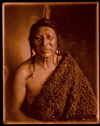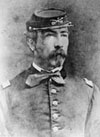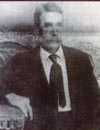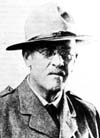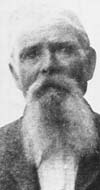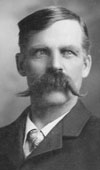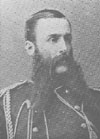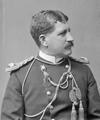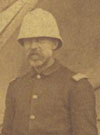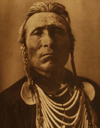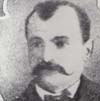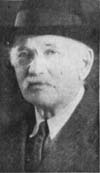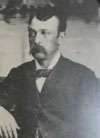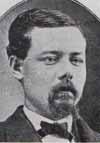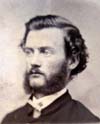Cornelius Cowley died on August 6, 1908, in Washington, D.C., at the Government Hospital for the Insane (now St. Elizabeth’s Hospital). He was buried in St. Patrick Cemetery in Lowell, Middlesex County, Massachusetts, as Cornelius Cawley on August 10, 1908. He was a Private in Company A who participated in the valley and hilltop fights.
Daniel Mahoney died at Barnes Hospital in Washington, D.C., on August 7, 1885, and was buried in the Soldiers’ Home National Cemetery there. He was a Private in Company M who participated in the valley and hilltop fights during the battle.
Joseph H. Green was born on August 8, 1849, in Leitrim, Ireland. He was a Private in Company D who participated in the hilltop fight during the battle.
Edmund Henry Burke was born in Manchester, England, on August 10, 1843. He was the son of Pat and Mary Crahen Burke. He was a Blacksmith for Company K who participated in the hilltop fight during the battle. He married Mary Ann Collins in 1877 in St. Paul, Minnesota, and they lived in Frederika, Iowa, from about 1880 until Mary Ann’s death in 1912. He later lived in Bremer, Iowa, and Sumner, Iowa, where he died in 1925.
Edward Davern died on August 10, 1896, in Washington, D.C., and was buried in Arlington National Cemetery in nearby Virginia. He was a Private in Company F who served as an orderly for Major Reno. He participated in the valley and hilltop fights where he was wounded.
Philipp Spinner shot himself through his heart at Camp Douglas, Wisconsin, on August 12, 1895, and was buried in the Fort Sheridan Cemetery in Highwood, Illinois. He was a Private in Company B who participated in the valley and hilltop fights.
White Swan (left) died on the Crow Agency in Montana on August 12, 1904, and was buried in the Custer National Cemetery there. He was an Indian Scout who participated in the valley and hilltop fights where he was wounded.
Thomas Hughes, who was also known as Charlie Hughes, died on August 12, 1911, in Nashville, Tennessee, and was buried in the Nashville National
